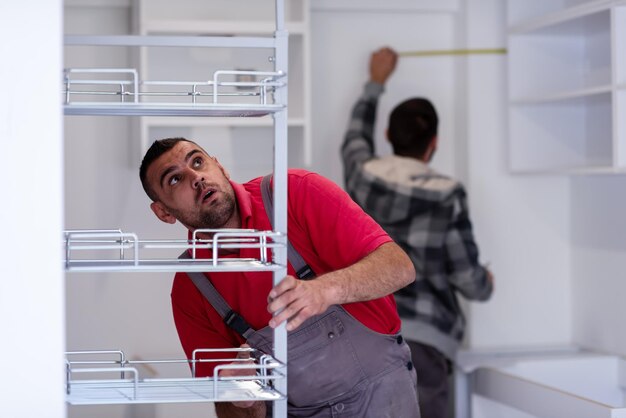Stop That Leak: A Complete Guide to Fixing Your Leaky Refrigerator
Finding a puddle under your refrigerator can be unsettling and inconvenient. Not only does it increase the risk of slips in the kitchen, but it can also signify a problem with your fridge that could escalate if left unchecked. Fortunately, tackling this issue doesn't require you to be a professional technician. With a little patience and the right guidance, you can often resolve a leaky refrigerator problem yourself.
In this comprehensive guide, we'll walk you through understanding why refrigerators leak and how to fix them, while offering practical maintenance advice. Let's dive in!
🌊 Common Causes of a Leaky Refrigerator
Understanding the root of the problem is crucial; your refrigerator could be leaking for several reasons:
💧 Blocked Defrost Drain
What It Is: The defrost drain allows for essential water drainage during the automatic defrost cycle. If it becomes blocked, water has nowhere to go, resulting in leakage.
How to Fix:
- Locate the Defrost Drain - Typically found at the back of the fridge.
- Assess the Blockage - It’s often due to ice. Use warm water to thaw the area or a pipe cleaner for more stubborn debris.
- Clear the Pathway - Ensure the pathway is unblocked by pouring water once the blockage is removed.
🚰 Water Filter Issues
What It Is: A misfit or expired filter may create pressure imbalance and leakage.
How to Fix:
- Check Your Filter - If it doesn’t fit snugly or appears worn, it’s time for a change.
- Replace It - Consult your refrigerator model’s guidelines to find compatible filters.
🌬 Leaky Drain Pan
What It Is: The drain pan collects water and allows it to evaporate. Damage or overflows can cause leaks.
How to Fix:
- Locate the Pan - It’s usually accessible beneath the fridge.
- Assess Damage - Look for cracks or overflowing water.
- Repair/Replace - Seal small cracks if possible; otherwise, replace.
🛠 Tools and Materials You'll Need
Before you start, gather the following items to streamline the repair process:
- Screwdriver Set: For removing panels.
- Hot Water: To clear icy blockages.
- Pipe Cleaner/Small Brush: For cleaning drains.
- Replacement Parts: If needed, such as filters or drain pans.
- Towel: To mop up water and prevent additional messes.
🔧 Detailed Step-by-Step Guide to Fixing a Leaky Refrigerator
Below, we’ll explore a straightforward approach to diagnosing and fixing a refrigerator leak.
Step 1: Safety First
Unplug the Refrigerator: Always ensure your appliance is disconnected from power before beginning any cleaning or maintenance process. This reduces risks and makes the diagnostics safer.
Step 2: Identify the Leak Source
- Pooling under the Fridge: Check the leak source at the drain pan, water line connections, or ice maker inlet.
- Water inside the Fridge: Focus on the defrost drain or water filter as potential causes.
Step 3: Examine and Address Key Components
Defrost Drain
- Ice Buildup: Use the hot water method to clear ice blockages.
- Examine and Clean: Run a pipe cleaner or small brush through the drain to ensure all debris is cleared.
Water Filter
- Fit and Expiry: Ensure the filter is properly installed and not past its expiration date.
- Replace If Necessary: Follow model-specific instructions for replacement.
Drain Pan
- Assess for Damage: Look for cracks and repair if possible.
- Replace Pan: If damage is extensive, consult your refrigerator’s manual for replacement instructions.
Water Line and Inlet Valve
- Check for Leaks: Inspect water lines for any visible leaks and tighten connections if needed.
- Replace Damaged Parts: If leaks persist, replacing the water line or inlet valve may be necessary.
Step 4: Reassemble and Monitor
After making necessary repairs or replacements:
- Plug the Refrigerator Back In: Ensure everything is in place and power up the fridge.
- Observe for Leaks: Regularly check for any signs of new leaks over the next few days.
Step 5: Perform Regular Maintenance
Prevent future leaks by engaging in routine checks:
- Monthly Checks: Monitor the drain pan and clean the defrost drain occasionally.
- Filter Changes: Replace water filters every six months.
- Connection Inspections: Regularly inspect water lines and connections for wear.
🔍 Regular Maintenance Tips to Prevent Future Leaks
Consistent care will greatly enhance your refrigerator’s lifespan and efficiency:
- Maintain Ideal Temperature: Keeping your refrigerator between 37-40°F (3-4°C) helps prevent icing issues.
- Clean Coils Annually: Extend the compressor’s life by cleaning condenser coils regularly.
- Inspect the Door Seal: Ensure a proper seal by cleaning and inspecting for tears or damage.
📝 Important Takeaways & Practical Tips
Here’s a summary to help you quickly address a leaky refrigerator:
- ❄️ Regularly defrost and clear drain pathways.
- 💧 Ensure the water filter is correctly installed and timely replaced.
- 🔍 Conduct monthly inspections of the drain pan and water lines.
- ⚙️ Use the right tools and follow model-specific guides for replacements.
Fixing a leaky refrigerator is manageable with the right knowledge and tools. Through diligent maintenance and swift actions to rectify leaks, you can avoid major complications. Enjoy the peace and safety of a dry kitchen floor and a well-functioning appliance!
Remember, these DIY tips are for common and minor issues. If your refrigerator continues to leak despite your efforts, reaching out to a professional technician may be the best course of action. Your appliance’s health is essential for keeping your home running smoothly, so don’t hesitate to seek expert advice when necessary.
